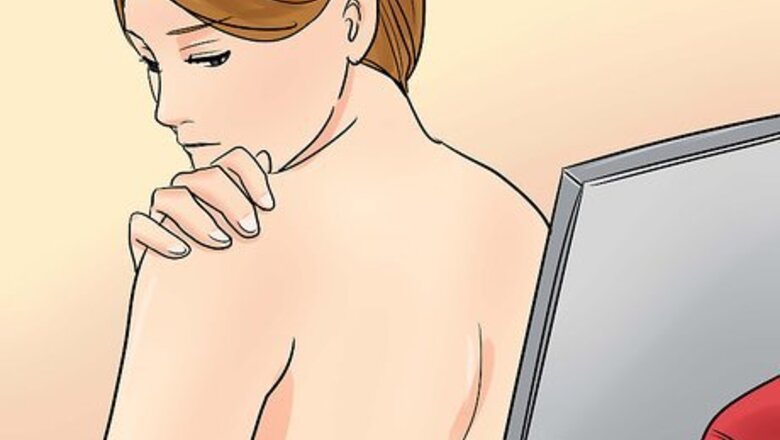
views
Diagnosing Bedsores
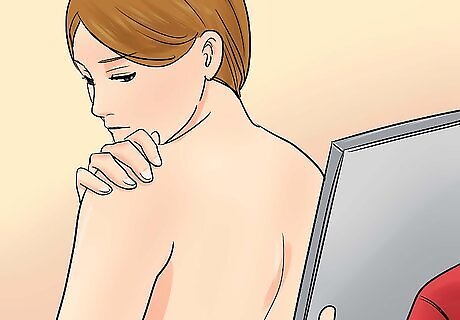
Check for skin discoloration. Take a close look all over your body, paying special attention to the places that rest against a bed or wheelchair. Use a mirror or ask someone to help you look at your backside, which may be hard to see yourself.
Look for skin that feels either warm and spongy or hard. The skin may feel thick or tough when you touch it. You might notice a patch that feels harder or rougher than the skin around it. If you're worried about bedsores, you might check the areas of your body that rest against a bed or wheelchair frequently to see if they feel any different when you touch them.
Notice if you feel pain or itching in the affected area. It's common for bedsores to itch or feel painful. Your pain may worsen when you touch the sore. Both itching and pain can be a sign of infection. Call your care provider as soon as you feel any itching or pain. If you do have an infection, you need to get treatment as soon as possible.
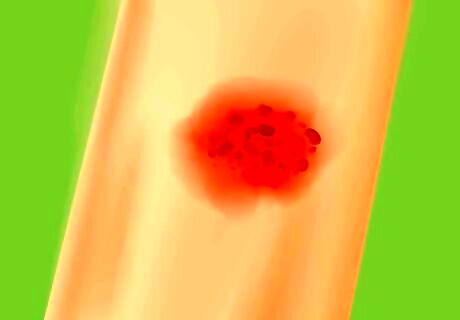
Check for bleeding or other fluids. If the bedsore is bleeding or seeping fluid from it, you may have fairly serious bedsores and need to consult a doctor immediately to prevent further damage and to manage pain. An offensive odor may indicate infection in the wound, in which case you should see a doctor immediately.

Call your doctor or in-home care provider, such as a wound care nurse. Your healthcare provider will ask you questions about your health, the nature of the sore areas, your diet and other topics. They will also conduct a physical examination, looking at your body and paying close attention to areas that are noticeably sore, discolored or tough to the touch. They may also take urine and blood samples to rule out particular conditions and to assess your overall health. Expect the doctor or care provider to ask these questions: How long has the skin discoloration been present? How painful is your skin in these areas? Have you had a recurring fever? Have you had bedsores before? How frequently are you changing positions or moving around? What is your diet like? How much water do you drink every day?
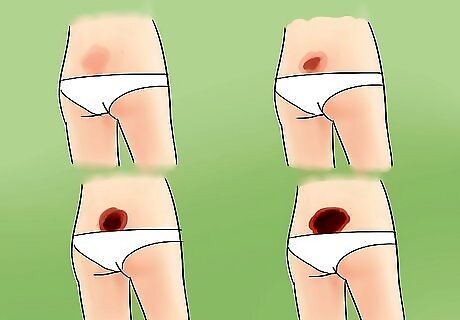
Determine the seriousness of the bedsores. There are 4 stages into which bedsores can be categorized. Stages I and II are less serious and can be treated and healed. Stages III and IV require medical intervention and possibly surgery to treat properly. Stage I: The skin has some level of discoloration but there is no open wound. For lighter complexions, the skin may look red; for darker complexions, the skin may look blue, purple or even white if your circulation is poor. Stage II: There is an open wound that is still shallow. The edges of the wound are infected or have dead tissue. Stage III: The wound is wide open and deep. It extends below the top layer of skin into the fat tissue layers. It may have fluid or pus in the wound. Stage IV: The wound is large, affecting several layers of skin tissue. Muscle or bone may be exposed, and there may be eschar, which is a dark substance that indicates necrotic (dead) tissue.
Supporting and Protecting Your Body
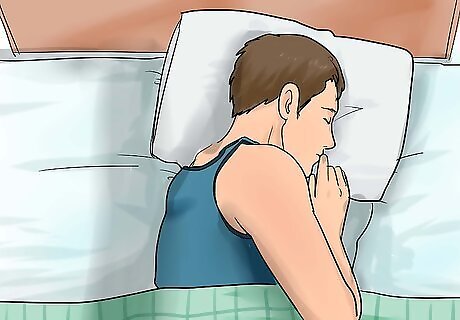
Relieve pressure on existing sores. If you have a sore that has developed, reposition the body and make sure you stay off that sore spot for at least 2-3 days. If the sore does not go away, check with your doctor to consider additional treatment options.
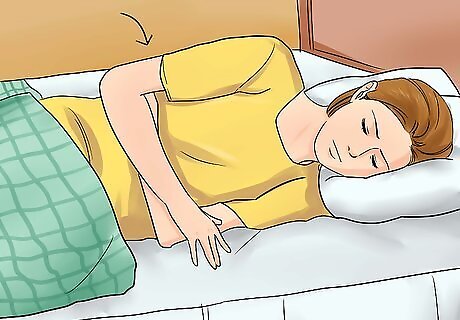
Reposition your body frequently. If you are confined to a bed or wheelchair, you need to reposition your body frequently throughout the day to relieve existing pressure on sores and to prevent bedsores from developing. Reposition the body every 2 hours in a bed or every hour in a wheelchair. This will relieve pressure that builds up on certain areas, which will help bedsores from getting worse. If you're in a wheelchair, you might use cushions to change your position. The cushions can prop you up at different angles to redistribute your weight onto another pressure point. Additionally, it's best for you to spend some time everyday lying in your bed or on the couch to minimize your time in the same position.
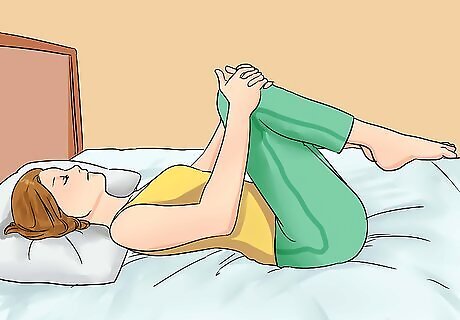
Keep as active as possible. Even though someone who is bed bound or wheelchair-bound may not be very active, their body can still be moved around. This will prevent pressure from building up in certain areas and will increase blood flow through the body. Activity can also improve mental health, a crucial component in maintaining your overall health.
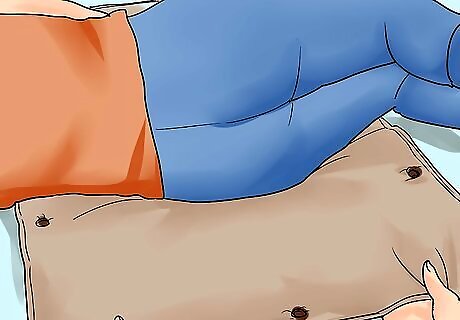
Use support surfaces and protective padding. The key to reducing risk of bedsores is to reduce pressure that builds up on particular parts of the body. Use special cushions that are made of foam or filled with air or water can be useful. Similarly, protective padding may help, especially between knees or under the head or elbows. Some support products such as doughnut-type products might actually increase the risk of developing bedsores. You can avoid this by switching out what type of product you are using to change up your pressure points. Check with your doctor to determine which products are best for you.
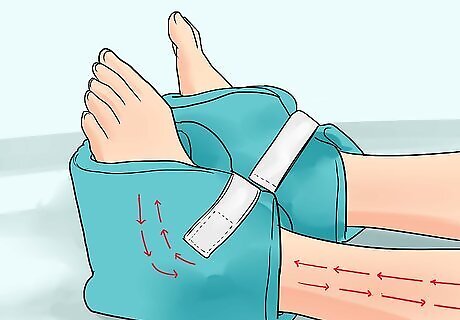
Maintain adequate blood circulation. Bedsores develop in part from inadequate blood flow to the skin areas. When pressure is applied to the skin, blood vessels are restricted from doing their job. Maintain good blood flow by drinking lots of water, not smoking, and repositioning your body. If you have diabetes, this might contribute to lower blood circulation. Work with your doctor to strategize how to improve blood circulation.

Choose comfortable clothing. Wear clothing that is not too tight or too loose, both of which can cause rubbing and irritation. Change clothing every day to ensure that skin is kept clean too. Wear cotton-based materials that do not have heavy seams. Be careful when using disposable underwear or pants made for incontinence. While these products can be very helpful if you need them, they can cause bedsores if you leave them on for too long. Change disposable underwear as soon as they become soiled, as the wetness increases the risk of bedsores.
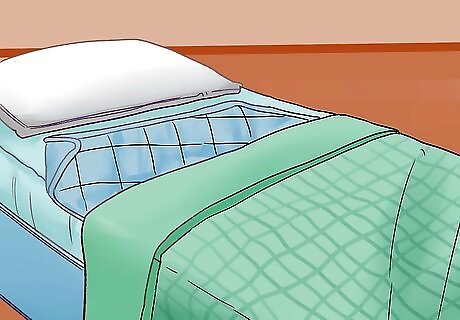
Change sheets often. For those who are bedbound, having clean sheets will ensure that bacteria will not aggravate bedsores. Bed linens may also get sweaty and irritate the skin. Changing the bedding on a frequent basis will help eliminate this risk.
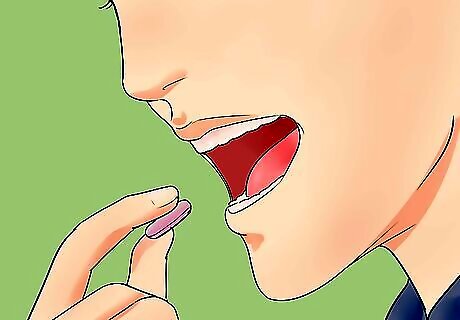
Control pain with ibuprofen. Take either over-the-counter pain relievers like ibuprofen or naproxen to reduce pain. Choose nonsteroidal anti-inflammatory (NSAID) medication, rather than aspirin, acetaminophen or opioids. Take ibuprofen before or after you reposition your body, when you undergo a debridement procedure, or when your wounds are getting cleaned. These can help reduce pain that you might feel. If you still feel pain during wound cleaning, your medical provider may prescribe a stronger pain medication.
Treating the Skin
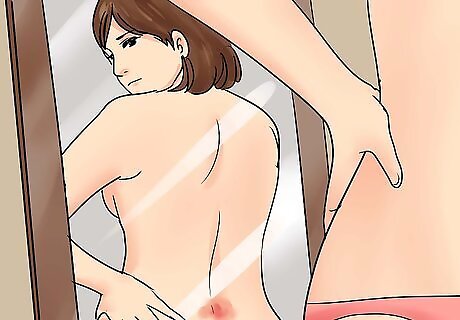
Inspect your skin every day. Bedsores can emerge rapidly and need to be addressed as soon as they are identified. Pay special attention to the parts of your body that lay against the bed or wheelchair, or that rub against other parts of the body or clothing. Pay special attention to the shoulders, lower back, tailbone, foot heel, hips, buttocks, knees, back of the head, elbows and ankles. Even your ears can develop bedsores if you lie on them for long periods of time.
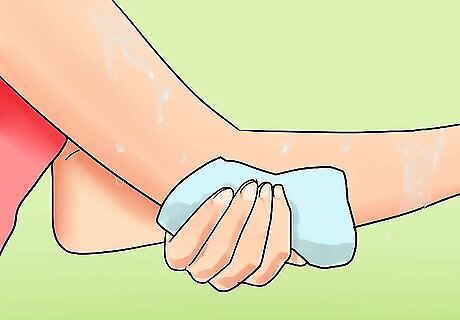
Keep the skin clean. For early stage bedsores, wash the affected area gently with soap and water. Pat the area dry (do not rub) with a towel. Pay close attention to skin that may be prone to sweating or soiling. Moisturize with lotion to keep from getting dry skin. Bedsores that develop on the buttocks or near the groin may be prone to getting feces or urine on them. Use protective and/or waterproof bandages over the bedsore area to eliminate this risk.
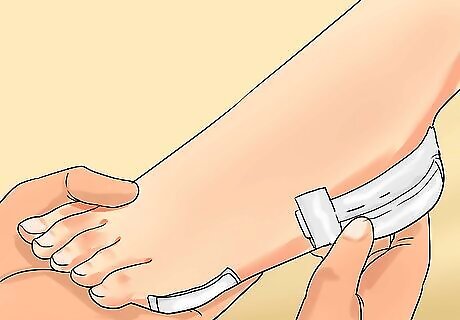
Clean and dress wounds. A wound should be cleaned and wrapped with fresh dressing. A wound may be irrigated with saline (salt water solution) to clean it out before being redressed. Consult a healthcare professional before doing this; they may prefer to do this procedure themselves. Do not use antiseptics like iodine or hydrogen peroxide on bedsores unless advised to by your doctor. These can actually hamper the healing process. There are different types of bandages or dressing materials that can be used. Make sure you choose non-stick bandages that won't stick to your wound. Soak the bandage with saline before you remove it so it comes off easily. Also, clear film or hydrogel can help a Stage I bedsore heal quickly and should be changed every 3-7 days. Other bandages may allow for more air to circulate or to protect from other fluids such as feces, urine or blood.
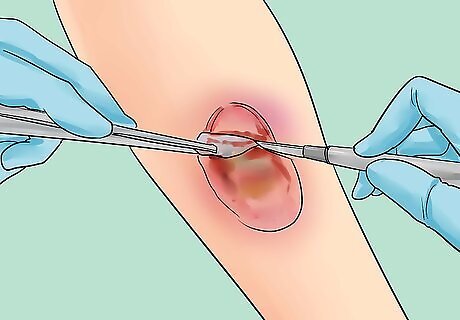
Get a debridement procedure. Debridement means the cutting away of dead flesh, which is performed by a doctor. This should be a relatively painless process, since the flesh does not have any live nerves, although there may be sensitivity since the dead flesh is next to flesh with nerves. Bedsores in later stages may require this procedure. Check with your doctor to determine the best approach to healing bedsores. Ask your doctor what they can do to help manage any discomfort you may feel during the procedure.
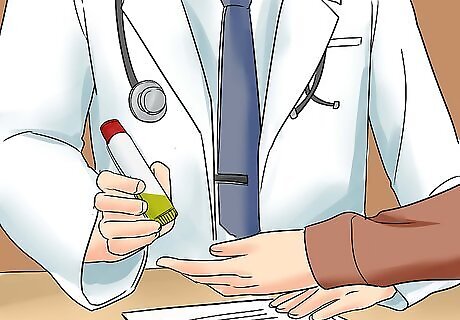
Treat infections with antibiotics. A doctor may prescribe a topical antibiotic that can be applied right onto the bedsore in order to stop the spread of infection and to help your body heal. Be generous when applying the cream, as it will also help prevent your bandages from sticking to the wound. The doctor may also give oral antibiotics, especially if the bedsore is at a later stage. If you have developed osteomyelitis, or a bone infection, you may need to take a long course of antibiotic medication. It may require more involved intervention from a doctor.

Monitor how sores are healing. Keep a close eye on how the sores are healing to make sure that they are clearing up and not getting worse. If the condition does not appear to be healing, consult your doctor. The easiest way to monitor how well your sores are healing is to take frequent photos and measurements of the wound. Keep the photos and measurements as a record.
Changing your Diet

Eat plenty of vitamin-rich foods. Having good nutrition is vital to keeping your body healthy and keeping bedsores at bay. When you are healthy, your body can help heal bedsores more quickly and keep new ones from developing. If you are deficient in certain vitamins, especially iron, zinc, vitamin A and vitamin C, you may put yourself at higher risk for developing bedsores. Take vitamin supplements in addition to eating foods rich in vitamins. Eating or drinking lots of protein will also help keep your body healthy. If you're worried you aren't getting enough protein through your diet, a supplement drink like Ensure can help.

Keep your body hydrated. Drink plenty of water every day. Men should aim to consume about 13 8-ounce cups of fluids and women should aim to consume about 9 8-ounce cups of fluids per day. This does not mean you need to drink only water. Many foods have high water content, and healthy foods can have up to 20% of your daily intake of fluids. Eat foods that also have high water content, such as watermelon, to increase your water intake. You can also get added hydration by sucking on ice cubes throughout the day in addition to drinking water. Do not drink alcohol, as this can contribute to dehydrating your body.
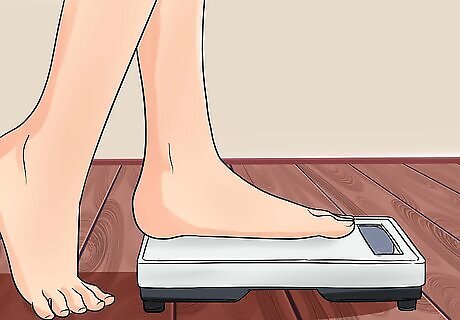
Maintain a healthy weight. If you are underweight, you have less padding to protect certain parts of your body that are prone to developing bedsores. Your skin can break down more easily. Being overweight can similarly cause problems, as it may be difficult for you to reposition your body to relieve pressure.
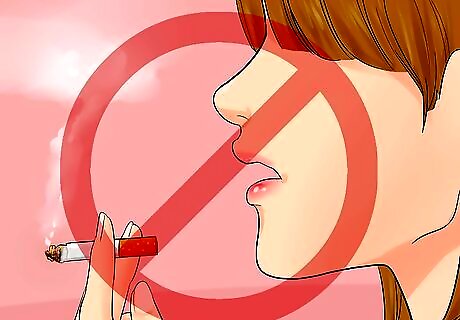
Do not smoke. Smoking contributes to drying out your skin and is generally considered an unhealthy habit. As well, it reduces blood circulation, a condition which can contribute to increased risk of bedsores.














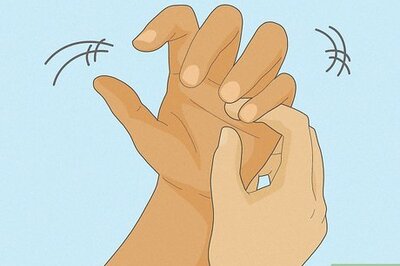


Comments
0 comment